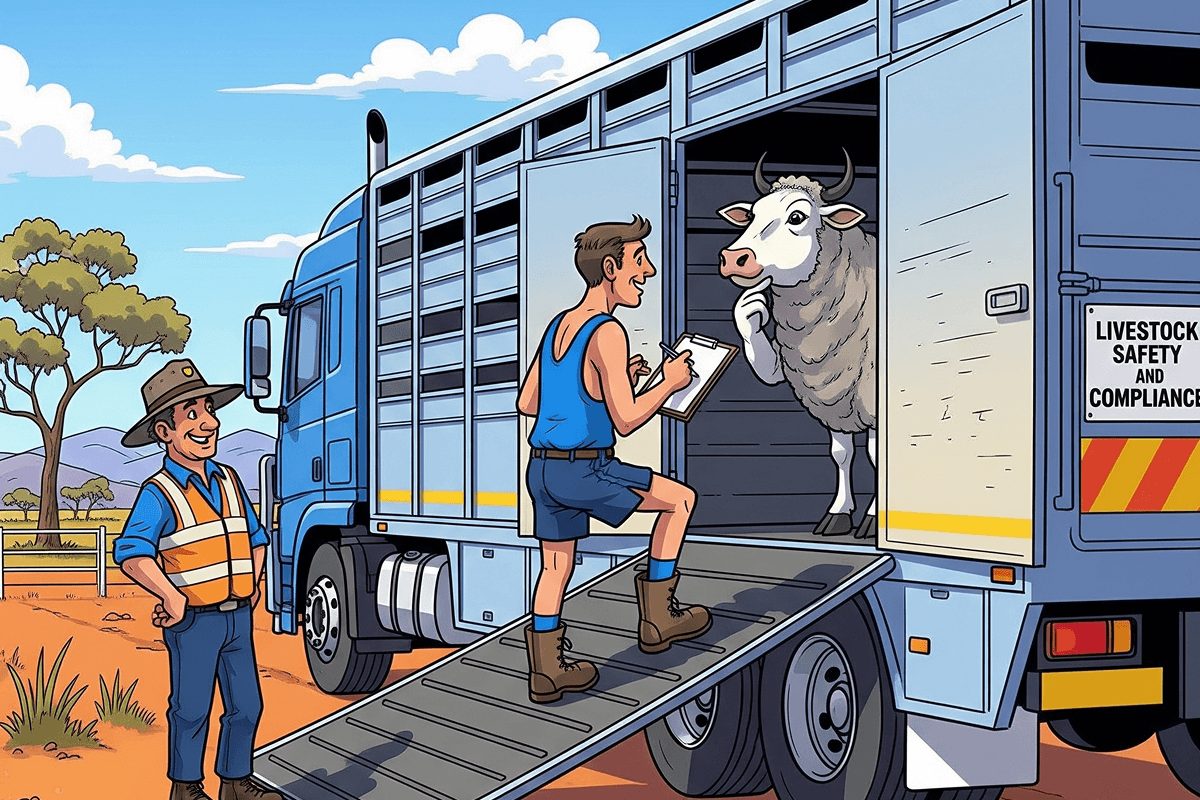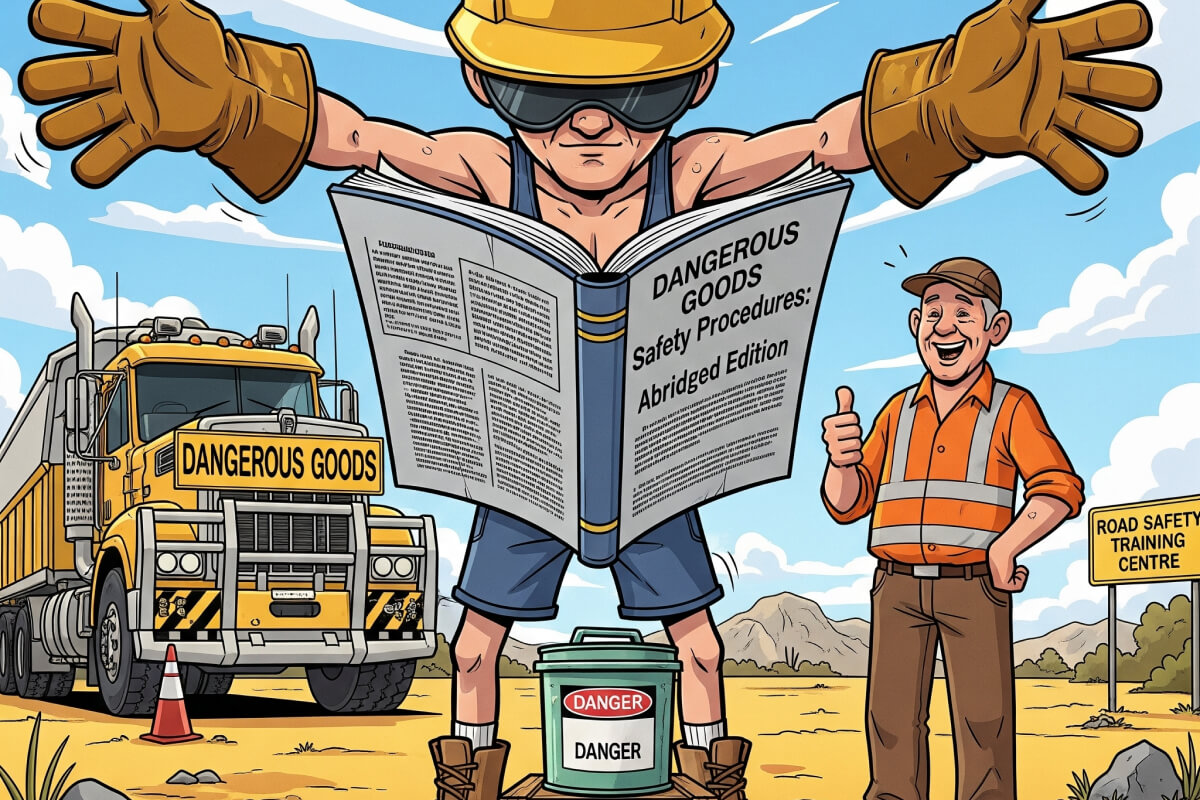
If you’re in the Australian transport industry, you know that transport is a risky business, and fatigue is one of the riskiest parts of all. As we’ve discussed on Big Rig Radio, tragically, 157 lives were lost in crashes involving heavy vehicles in the 12 months to March 2025, with fatigue remaining a major contributing factor, especially in long-distance and overnight freight. But fatigue isn’t just about falling asleep; it’s about reduced reaction times, poor decision-making, and that dangerous pressure to push through “just one more hour”. This pressure, unfortunately, can often stem from the top, where operators may feel compelled to stretch legal driving hours, skip breaks, or neglect their health, sometimes due to not being paid fairly for their time, leading to potentially fatal outcomes.
That’s why our latest Risky Business on Big Rig Radio episode dives deep into Advanced Fatigue Management (AFM). This performance-based accreditation under the NHVR is designed for businesses that need flexibility beyond standard or Basic Fatigue Management (BFM) hours. AFM isn’t about “flogging” drivers or dodging rules, but rather about demonstrating that you can manage fatigue risks to an equivalent, or even better, level of safety. It’s about designing a fatigue risk system that genuinely works for your business, proving that safety and productivity can indeed go hand in hand.
In this episode and our summary below, we pull back the curtain on the reality of fatigue management in 2025, exploring what AFM is, how it works, and how smart operators are using it to run safe, flexible, and compliant businesses. You’ll learn how AFM can offer extended shift lengths, greater operational efficiency, and even a better lifestyle for drivers – potentially guaranteeing more time at home or increasing earning potential. We also cover how to apply for AFM, what makes a good work and rest schedule, and why this isn’t about dodging the rules, but about doing the right thing, better. If you’re ready to move beyond the one-size-fits-all model of basic fatigue, this is for you.
You can listen to the full episode here:
| Listen to the full episode on | ||
| Spotify | Soundcloud | Apple Podcast |
Advanced Fatigue Management: Optimising Safety and Productivity in Transport
As someone deeply involved in heavy vehicle compliance and the operational realities of the Australian transport industry, I often encounter questions about how businesses can achieve greater flexibility while upholding the highest safety standards. One of the most effective frameworks for this is Advanced Fatigue Management (AFM).
Fatigue is a pervasive and dangerous risk in our industry. It’s not merely about the risk of falling asleep at the wheel; it significantly reduces reaction times, impairs decision-making, and can compel drivers to push beyond safe limits, often due to operational pressures. Tragically, fatigue remains a major contributing factor in heavy vehicle crashes, particularly in long-haul and overnight freight. This highlights the critical need for robust, proactive fatigue management strategies.
AFM is a performance-based accreditation designed for transport businesses that require more operational flexibility than standard or Basic Fatigue Management (BFM) models. It’s about demonstrating a sophisticated approach to managing fatigue risks, backed by a strong safety culture, effective data management, and comprehensive systems.
Key Benefits of Implementing AFM
Embracing AFM can yield significant advantages for both your business and your drivers:
- Extended Operational Flexibility: AFM permits longer shift lengths for urgent or irregular freight tasks, offering a level of flexibility not available under standard hours or BFM. This can lead to more efficient long-haul and overnight operations, potentially reducing the need for frequent handovers and vehicle swaps.
- Enhanced Driver Lifestyle: A well-structured AFM system can lead to longer periods of rest at home for drivers, such as guaranteed four or five days off. This significantly improves their quality of life, even if it means working longer shifts during their rostered days.
- Increased Earning Potential: Greater flexibility allows drivers to complete tasks that might extend beyond standard hours, potentially increasing their earning capacity.
- Improved Rest Patterns: Many AFM rule sets actually reduce the maximum continuous driving hours before a break, often from 6 hours down to 5 or even 4, integrating more frequent rest breaks (e.g., a 15-minute break at least every 4 hours and 15 minutes).
- Proactive Risk Management: AFM mandates comprehensive policies, procedures, and systems, fostering a truly proactive approach to managing fatigue across your operations.
Navigating the AFM Application Process
Applying for AFM accreditation involves a clear, structured approach:
- Understand Your Business Needs: Begin by assessing if your current operations consistently push the limits of BFM or standard hours. Determine if you have the internal capacity to monitor, train, and audit the fatigue controls you plan to implement. AFM is a “reward for effort,” so a commitment to robust management is essential.
- Build Your Safety Case: The NHVR requires a written safety case for all AFM applications. This crucial document must articulate your operational context, describe your proposed AFM hours, and detail how fatigue-related risks will be identified and managed. Explaining your approach in plain English, demonstrating how safety principles will be met, is key.
- Engage the NHVR Early: It is highly advisable to contact the NHVR early in the process. Applications are submitted via the NHVR portal, which has become more user-friendly with helpful templates. Be prepared for potential requests to revise schedules or improve controls during the assessment period.
Key Accreditation Requirements: Standards and Principles
To gain AFM approval, operators must demonstrate compliance with 10 AFM Standards and align with seven AFM Safety Principles, all supported by evidence of a functioning fatigue risk management system.
The 10 AFM Standards provide a framework for your operations:
- Scheduling and Rostering: Consider driver history, recovery sleep, and forecast schedules proactively.
- Readiness for Duty: Implement self-assessments, drug and alcohol policies, and supervisor checks, encouraging drivers to report fatigue without fear.
- Fatigue Knowledge and Awareness: Mandate formal, role-based, and ongoing refresher training on fatigue.
- Responsibilities: Clearly assign duties to each staff role, ensuring understanding through training and regular refreshers.
- Internal Review: Conduct annual system reviews with audit plans and track corrective actions.
- Records and Documentation: Store records for three years, ideally using digital systems for version control and accessibility.
- Health: Include health assessments and sleep disorder screening. Policies should encourage health checks without negative financial consequences for drivers.
- Workplace Conditions: Ensure conditions support proper rest, including comfortable cabins, effective air conditioning, and access to clean rest areas or alternative accommodation.
- Management Practices: Implement robust monitoring systems, clear communication, and a consistently followed disciplinary framework.
- Operating Limits: Ensure AFM schedules remain within approved hours and legal limits, with schedules accessible to all relevant staff.
The 7 AFM Safety Principles are biological benchmarks guiding work and rest design:
- Minimise continuous wakefulness.
- Increase rest break frequency.
- Provide real sleep opportunities, potentially by offering accommodation outside the truck.
- Prioritise sleep during night hours.
- Avoid early morning end-of-shift times.
- Limit the number and duration of long shifts (e.g., exceeding 14 hours is typically restricted to a few times a week, not on consecutive days).
- Build in proper recovery through 30-plus hour resets, which include two 6-hour rest periods between 12:00 a.m. and 6:00 a.m. on consecutive days, based on the driver’s base time zone.
While AFM provides flexibility, it operates within strict “outer limits” for escalated risk contraventions, such as a maximum of 15.5 hours work in a 24-hour period and 154 hours in 14 days. These limits ensure that even with increased flexibility, constant excessive driving is prevented.
The Indispensable Role of Technology
Electronic Work Diaries (EWDs) like Hubfleet are incredibly valuable for AFM. They simplify the complex task of tracking hours, making it easier to comply with intricate AFM rule sets and provide evidence for audits. While EWD providers need to customise rule sets for specific AFM applications, the investment is worthwhile for managing intricate hours and avoiding the difficulties associated with paper logbooks. EWDs also allow for more flexible break tracking, such as 20-minute breaks, which are harder to account for with paper logs.
Addressing Misconceptions
It’s a common misconception that AFM simply allows unlimited driving or encourages “flogging” drivers. In reality, AFM is highly tailored to a company’s specific operational needs. It’s about enabling greater flexibility and achieving better outcomes for both the business and its drivers, often by making work-rest patterns more efficient and driver-friendly. For example, it might allow a driver to complete a 15-hour return leg to reach a proper resting place instead of stopping on the roadside.
The industry is working towards broader AFM adoption. Historically, some businesses with AFM viewed it as a competitive advantage and were reluctant to share information, which hindered overall progress. There’s a strong desire for more readily available, “off-the-shelf” AFM policy templates to simplify the application process for others. Additionally, continuous improvement is needed in health policies to encourage drivers to undergo necessary medical checks, like sleep disorder screenings, without the fear of losing their income or licence.
In essence, AFM transforms fatigue management from a rigid set of rules into a sophisticated, performance-based system. It’s like upgrading from a fixed-gear bicycle, where you’re limited to one speed regardless of the terrain, to a multi-speed mountain bike. While the mountain bike requires more skill and understanding of its gears and conditions (the AFM standards and principles), it offers the flexibility to navigate diverse terrains efficiently and safely, ultimately getting you further and more comfortably than the fixed-gear bike. This adaptability, when properly managed, allows businesses to optimise their operations and ensure driver well-being simultaneously.
Sign up for a free trial today to simplify your fatigue management.







